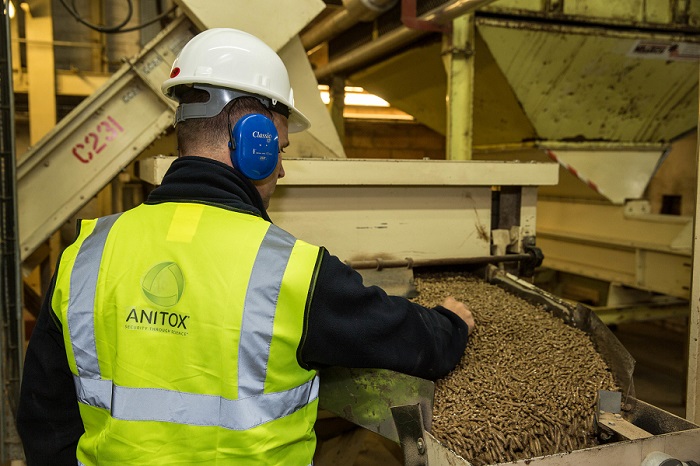- Posted by Anitox
Improving Efficiency and Quality: Advancements in Feed Manufacturing Technology
Feed manufacturing technology has come a long way in recent years, with advancements in equipment and processes leading to improved efficiency and quality. These improvements have allowed feed manufacturers to produce more feed in less time while also ensuring that the final product is of the highest possible quality.
However, a key component to manufacturing high-quality feed more efficiently is the producer's ability to effectively manage moisture.
Have a question? Ask an Expert Today.
%20(300%20x%20175%20px)%20(97).png?width=300&height=175&name=Untitled%20(175%20x%20300%20px)%20(300%20x%20175%20px)%20(97).png) Moisture Management is Critical to Feed Production
Moisture Management is Critical to Feed Production
Moisture management is key to enhancing feed production efficiency and value. By maintaining optimal moisture levels, energy consumption, material loss and equipment wear-and-tear can be reduced and in some cases throughput can increased.
The moisture content of feed is rarely constant, and it typically changes during the feed milling process. Posing several issues for producers and end users, including negative effects on nutrient distribution, inventory loss, feed costs, yield and profitability.
Unfortunately, adding moisture back into the feed mixing process is not as simple as it seems. Water has high surface tension and is often inadequately absorbed by feed if added directly, leading to uneven or incomplete water absorption in feed. Ultimately resulting in challenges such as low pellet quality, nutrient segregation and spoilage.
Both high and low moisture content in feed can reduce the improvement observed with new feed manufacturing technology. High moisture reduces throughput, increases the energy required by the pellet-making process and can impact quality by leading to feed spoilage and dense, brittle pellets. Conversely, low moisture can reduce yields, increase fines, and result in nutrient over-formulation and easily broken pellets.
%20(300%20x%20175%20px)%20(92).png?width=300&height=175&name=Untitled%20(175%20x%20300%20px)%20(300%20x%20175%20px)%20(92).png) Effective Moisture Management Aids Feed Manufacturing Technology
Effective Moisture Management Aids Feed Manufacturing Technology
Moisture variability directly impacts feed production costs and quality and is influenced by ingredient type, source, age and handling. Optimizing moisture levels throughout the production process enables producers to deliver a safe and nutritious product from start to finish, facilitating the production of more high-quality feed while minimizing costs.
To maximize producer profitability, proper moisture management is essential. Uniform absorption and distribution of moisture prevent uncontrolled microbial growth and support pellet quality and feed utilization. This also reduces production process losses and shrinkage. Moisture is a significant factor in producing high-quality pellets. Therefore, producers must ensure uniform moisture absorption to protect feed form.
Milling efficiency aids, such as Maxi-Mil, promote moisture retention in feed through reducing water’s surface tension and increasing its penetration within feed particles. These effective tools give producers the ability to further enhance production efficiency improvement observed with evolving feed manufacturing technologies while supporting continued production of high-quality feed.
Today’s feed manufacturers are able to produce more feed in less time while also ensuring that the final product is of the highest possible quality. As technology continues to advance, we can expect to see even more improvements in the feed manufacturing industry and continuing to implement effective moisture management strategies enables producers to further enhance the efficiency and quality of animal feed.
Producers ready to support their feed manufacturing technology with effective moisture management should contact their clean feed expert today.


